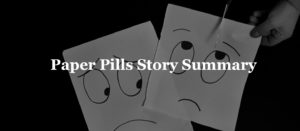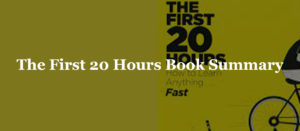The great mortality: an Intimate History of the Black Death, The Most Devastating Plague of All Time.
The great mortality Book Review:
The Great Mortality is an extraordinary epic interpretation of the wickedest natural catastrophe in European history. It was a drama of courage, madness, sacrifice, cowardice, and misery that brilliantly illuminates the darkest days of humankind when an old world finished and a new world began. This is a real story of the killer of a mid-14th century, which emerged from central Asia and relocated Western countries, i.e., into the cities of Mediterranean Europe. In the era in which the fastest transportation mode was a horse and less than five years, the killer encompassed all of Europe.
John Kelly designates in a compellingly the vivid moment-to-moment scenario, an infectious form of epidemic bacillus that swept out of Asia across China and the Middle East to Europe, and killing one third to a half of the population of the world between 1347 and 1351. It must have seriously observed as if the termination of the world had come due to this. Christendom, which had been confident about the destruction of the pagan Mongol kingdom, perceiving it as the Judgment of God. It has been reacted with dread when the Genoese galley carried it closer to home. Fabricated but wish-fulfilling myths that were then realized as spread deliberately.
The prose of Kelly moves with brushfire speed that is like the stream of septicity itself. It was leaped over the medieval map and painted the chain of epidemics with a Goya-like and hard-edginess that a mordant and modern eye for the absurdities and brutalities of the time. This book is often as thrilling as a first-class TV drama or documentary. But there is a problem, i.e., the urbane and scientific or thriller style keeps us focused and emotionally or restlessly on the foreground. He explained what occurred comprehensively with evidence and explained with clarity, although I don’t go much away from it. The problem that hangs over the subject and that should pull its various aspects into the more profound consistency about what impression the disaster put on the human mind did.
This book is based on historical evidence and has an elegant style of expression by the author. He described that after the devastating visits of King Death and minds did vary in subtle but deeply seismic ways. To some degree, the European personality became blunter of the society, i.e., less trusting and imaginatively consolable. The author has become arguably the more politically and secular militant. Within one generation, humans get the Bishop-scourging homilies of the anti-clerical reformer in England. It was the violence and anarchy of the revolt of the peasants. It was as a long-standing wall of philosophical correctness too, which had finally been ruptured, and it could not convincingly be rebuilt.
Although Kelly is vigilant in his assumptions, he makes it informal to see why these variations in the sea that part of a criticalness previously in the air of the Middle Ages took place. In 1351, the Biblical apocalypse’s prior-conditions were noticeable everywhere in the society, yet the promised vanished, and the return of Christ and His Saints did not emanate. He narrated that prayers were offered up and hysterical with fear but went unreciprocated. There were nauseating bouts of incriminating in the social order, i.e., anti-Jew, anti-leper, or anti-anyone that is theologically impure and illogical, satisfying the long-standing Crusader bloodthirstiness but nauseated the more discriminating.
Did he raise the question that is it entirely a coincidence or accident that the corpus of English literature found in its commonly accepted shape begins soon after the prodigious catastrophe? He said that the authors are still read that Chaucer, Langland, and Malory follow within 50 to 100 years. In the warm, thrusting, lewd, self-justifying travelers of The Canterbury Accounts, or the piercing anger at social prejudice which fuels the impracticable hallucination of Piers Plowman, or the catastrophic sense of confirmed human weakness pervading the Morte d’Arthur.
This social perspective can be observed by the historically conscious reader, till now, some of the half-absorbed but many are the still-reverberating impact of the trauma of the epidemic, the way it aided to destabilize the configurations of the old faith and beliefs, the way it prompted men that the social indulgence they had been faithful to was not, the earthly emulation of a divine harmoniousness, which is then in the authority of kings and the possibilities of churchmen “there was no expectation for to trust in.”
The author is at his best when his own causticity is sturdiest. A phrase he wrote in one of his chapter that is about the medieval medical theory. This theory is about the “ancient supremacy over the observable fact. This type of attitude catches the limits not just of the New Galenism but of the entire magico-scriptural approach. These articulate scientific interjections recompense productively for the book’s relatively weak social sense. He quotes a supposedly contemporary verse about the epidemic actually written 300 years advanced about death in general. On the other hand, he used more elemental but better-understood about the expected natural disasters in the world, i.e., floods, storms, and abortive harvests, which is very common to every era in every society. The great mortality is defined by the empirical enlightenment.
Kelly continues to write in a breezy tone, and he is better to keep his readers commencing and bogging down also amid the litany of horrors of the book. He is infrequently repetitious, and he also fond of phrases he borrowed from, ”Malthusian deadlock”. Sometimes his prose raises overripe when he writes about ”the enormous sky coerces with an infiniteness that infatuations the soul.” More suspiciously, he consents himself substantial license to reconstruct passages for which negligible evidence happens. Still, some readers perhaps put off by his propensity to treat the epidemic as an individual, as when he writes about ”the epidemic came up the road from Bristol and became tired, hungry and willing to get out of the deluge,” or when he designates it growing more infectious ”as if the slaughter was the only contentment it knew.”
He also discussed the human, mind which is addicted to noticing, grasping the concealed patterns, and governing the material phenomena. He has always hesitated at the apparent arbitrariness of the illness. So his writings look instead of hidden inner meaning but the spiritual justice underlying the physical malady. Consequently, the havoc fashioned by innate structural weakness or bacteria that are confidently ascribed to the devil or God, or the alienated state of the soul or body. According to the old superstitious perspective, a sense of blame, or at least of distorting psychic conflict that hangs over the disease. They also had a belief about the outer reveals the inner and the body the spirit within it.
This perspective is critical because if medieval philosophy and art are reducible to a distinct and easy generalization, this idea is ultimate. Everything did make sense, and creation was harmonious. This is the perspective, according to which Dante’s Comedia delivered the most sublime expression in his writings. Heaven and earth are fabricated together in a divine arrangement and coherence governed by the unanswerable moral laws. These anti recessionary powers exercised in the name of Christ by the church, the errant and suffering of the individual was empowered to endure with endurance and decease with a higher optimism.
The great mortality gravely undermined these bejeweled and consoling beliefs. Millions of people had perished, in such deplorable circumstances, which only the most stubbornly devout and could trust any longer because this was a countenance of divine forecasting or some spiritual contemptibility on the part of the departed. As Kelly notes that science began slowly but with a stable persistence that replaced the idea of magic, and the in art, the practice of allegory began to weaken. Allegory was the late primitive house style. In this style, things were recognized and re-labeled or re-explained as if our bandages have finally been removed from the bodies. Everything becomes earthy and sensual, wall-garden and exquisite, the flowering ornament, and the beauty of a woman shows the signs of God tilts upwards iconographical toward him. The practice that permits the doubt but is rooted in inevitability. It is believed that the realities of the cosmos are already known.
According to the author, this attitude was not so reasonable after the years of the epidemic in society. The expressions that follow are drowsier of the old religious cant and traditions, less patient with the concept that discovered the “truths” and somehow canceled out the changes of the literal and tangible world. They believed that humans or all living beings create themselves that life must be restored from the ground. The skill they make preferences the tidal pull of uncertainty to the sea of brilliant faith but a becalmed and tyrannical reflection.
Hence, we tend now to contemplate this skepticism. This is essentially modern and progressive, but it is the oldest and recognizable attitude in western literature and society. It is hard, bright, huddled-for-warmth, pitiless, stoic, and battle-cry of ancient tragic drama and epic poetry. We can find it in the Anglo-Saxon literature and social practices of wandering, sea-voyaging, and exile, i.e., in the Beowulf or the Icelandic sagas. It had a relatively insignificant place though in the culture and assumed of the High Middle Ages. In anticipation of the great mortality in society. This plague cast a deep impression across the centuries and remainders part of the collective reminiscence of Western societies.
Bibliography
Kelly, J. (2005). The Great Mortality: An Intimate History of the Black Death, The Most Devastating Plague of All Time. New York: Harper Collins.




